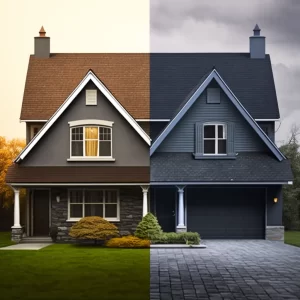
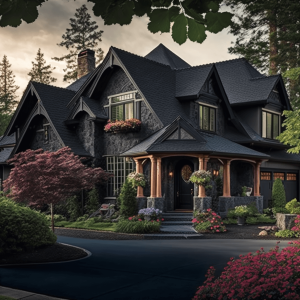 Looking to give your home a facelift with a new roof?
Looking to give your home a facelift with a new roof?
Excellent choice!
But before you hit the roof (sorry, couldn’t resist), you need to decide on the right roofing material for your re-roofing project.
With so many options available, it can feel overwhelming.
Fear not!
We’re here to guide you through the madness.
In this post, we’ll break down the most popular roofing materials and help you choose the perfect match for your home.
Factors to Consider When Choosing a Roofing Material
The right roofing material can make or break your re-roofing project.
So before you start browsing, consider the factors that will impact your decision.
Are you looking for something affordable or long-lasting?
Do you live in a climate that’s harsh on roofs?
Or are you simply trying to impress your neighbors with your impeccable taste in roofing?
We’ll help you weigh the pros and cons of each material so you can make an informed decision.
Asphalt Shingles
Asphalt shingles are the popular kid on the block, but are they the right choice for your re-roofing project?
We’ll break down the pros and cons of this popular material and help you decide if it’s worth joining the asphalt fan club.
Pros of Asphalt Shingles:
Affordable: Asphalt shingles are a cost-effective option, making them perfect for homeowners on a budget.
Variety: Asphalt shingles come in an endless array of colors and styles, so you’re sure to find the perfect match for your home.
Durability: Asphalt shingles can stand up to some serious weather, from heavy rain to high winds and even hail.
Easy Maintenance: Asphalt shingles require minimal maintenance, and repairs are a breeze.
Cons of Asphalt Shingles:
Short Lifespan: Unfortunately, asphalt shingles don’t last forever. You may need to replace them sooner than other roofing materials.
Weather Woes: While asphalt shingles can handle a lot, they can also crack and deteriorate in extreme temperatures.
Environmental Impact: The petroleum-based materials used in asphalt shingles can have a negative impact on the environment.
Limited Warranty: Be sure to read the fine print, as many asphalt shingle warranties have limitations.
So, Is Asphalt Shingles the Right Choice for Your Re-Roofing Project?
While asphalt shingles may be the most popular option, they’re not necessarily the right choice for everyone.
If you’re on a tight budget and want a wide variety of colors and styles, asphalt shingles might be perfect for you.
But if you’re looking for something more durable, sustainable, or long-lasting, you may want to explore other options.
In the end, choosing the right roofing material for your re-roofing project will depend on your unique circumstances.
Take the time to weigh the pros and cons of each option and consult with a professional roofing contractor for their expert opinion.
With the right roofing material, your home will be the coolest on the block!
 Metal Roofing
Metal Roofing
If you’re looking for a material that’s durable, long-lasting, and looks like it belongs in a high-end magazine, metal roofing might be the perfect choice for your re-roofing project.
But is it worth the investment?
We’ll weigh the pros and cons of this sleek material and help you decide if it’s the fashion-forward choice for your roof.
Pros of Metal Roofing:
Durability: Metal roofing is one of the most durable roofing materials available, able to withstand extreme weather conditions, such as high winds, heavy rain, and snow.
Longevity: Unlike asphalt shingles, metal roofing has a longer lifespan, often lasting up to 50 years or more, making it a cost-effective choice in the long run.
Energy Efficient: Metal roofing can help reduce your energy bills by reflecting sunlight and heat away from your home, keeping it cooler in the summer.
Aesthetically Pleasing: Metal roofing comes in a variety of colors and styles, allowing you to customize your roof to match your home’s unique style.
Cons of Metal Roofing:
Expense: Metal roofing is often more expensive than other roofing materials, such as asphalt shingles, due to its durability and longevity.
Noise: Metal roofing can be noisy during heavy rain or hail, which may not be ideal for some homeowners.
Installation: Metal roofing installation requires specialized skills and equipment, which may result in higher installation costs.
Denting: Metal roofing can dent if struck by heavy objects, such as falling branches or hail, which may be a concern for some homeowners.
Is Metal Roofing the Right Choice for Your Re-Roofing Project?
If you’re looking for a roofing material that’s both durable and long-lasting, metal roofing may be the perfect choice for your re-roofing project.
It’s energy-efficient, aesthetically pleasing, and can provide a stylish update to your home.
However, if cost is a concern, or you’re worried about noise or potential denting, you may want to consider other roofing materials.
In the end, choosing the right roofing material for your re-roofing project will depend on your unique circumstances.
Weigh the pros and cons of each option carefully, and consult with a professional roofing contractor for their expert advice. With the right roofing material, your home will be the envy of the neighborhood!
Tile Roofing
Tile roofing has been around for centuries, and for good reason.
It’s stylish, durable, and timeless.
But is it right for your re-roofing project?
We’ll explore the pros and cons of this classic material and help you decide if it’s worth the extra effort.
Pros of Tile Roofing:
Durability: Tile roofing is incredibly durable, with some tiles lasting up to 100 years or more. It’s also fire-resistant, making it a safe choice for homeowners.
Aesthetically Pleasing: Tile roofing is available in a variety of colors and styles, including clay and concrete, allowing you to choose a roof that matches your home’s unique style.
Energy Efficient: Tile roofing is naturally energy efficient, as it helps regulate the temperature of your home by reflecting heat away from the roof.
Low Maintenance: Tile roofing requires minimal maintenance, as it’s resistant to rot, insects, and other types of damage.
Cons of Tile Roofing:
Expense: Tile roofing is more expensive than many other roofing materials, such as asphalt shingles, due to its durability and longevity.
Heavy Weight: Tile roofing is significantly heavier than other roofing materials, which may require additional structural support.
Installation: Tile roofing installation requires specialized skills and equipment, which may result in higher installation costs.
Fragility: Tile roofing can be fragile and may crack or break if walked on, making repairs more difficult and expensive.
Is Tile Roofing the Right Choice for Your Re-Roofing Project?
If you’re looking for a roofing material that’s stylish, durable, and energy-efficient, tile roofing may be the perfect choice for your re-roofing project.
However, it’s important to consider the expense and potential need for additional structural support. Tile roofing installation also requires specialized skills and equipment, which may result in higher installation costs.
Ultimately, the decision of whether to use tile roofing for your re-roofing project will depend on your unique circumstances.
Consult with a professional roofing contractor for their expert advice, and weigh the pros and cons of each roofing material carefully. With the right roofing material, your home will be the envy of the neighborhood!
 Other Roofing Materials
Other Roofing Materials
Feeling adventurous?
There are plenty of other roofing materials to choose from, including wood, slate, and synthetic roofing.
We’ll explore the pros and cons of these materials and help you decide if they’re worth the risk (or the reward).
Pros and Cons of Other Roofing Materials:
Wood Shingles and Shakes: Wood shingles and shakes are a classic roofing material that adds natural warmth and beauty to any home. They’re also environmentally friendly, as they’re made from renewable resources. However, they’re more susceptible to fire and require regular maintenance to prevent mold and rot.
Slate: Slate is a natural stone roofing material that’s durable, fire-resistant, and visually striking. It also has a long lifespan, often lasting up to 100 years or more. However, it’s expensive, heavy, and requires specialized skills and equipment for installation.
Synthetic Roofing: Synthetic roofing materials, such as polymer or rubber, are a cost-effective and durable alternative to traditional roofing materials. They come in a variety of colors and styles and can mimic the look of other materials, such as wood or slate. However, they may not be as aesthetically pleasing as natural materials, and some synthetic materials may be prone to fading or discoloration over time.
Is an Alternative Roofing Material Right for Your Re-Roofing Project?
While alternative roofing materials may not be as popular as asphalt shingles or metal roofing, they can offer unique benefits for your re-roofing project.
Consider your budget, climate, and aesthetic preferences when choosing an alternative roofing material.
Consult with a professional roofing contractor for their expert advice, and weigh the pros and cons carefully before making a decision.
Choosing the Right Material for Your Re-Roofing Project
With so many options available, choosing the right roofing material for your re-roofing project can feel like a wrestling match with Hulk Hogan.
But armed with the information in this post, you’re ready to make an informed decision.
Whether you’re looking for affordability, durability, or style, there’s a roofing material out there that’s perfect for your home.
Conclusion
Don’t let your re-roofing project be a total knockout.
With the right roofing material, your home can be the heavyweight champ of the neighborhood.
So go forth, future roof warriors, and find the perfect match for your home.
The winning material is waiting for you!
from
https://roofingsolutionsnearby.com/from-shingles-to-slate-choosing-the-right-material-for-your-re-roofing-project/
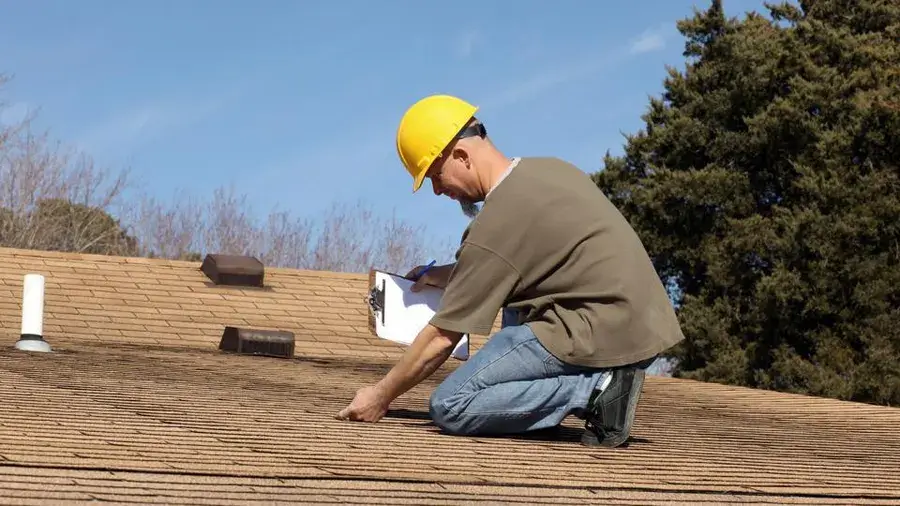 The Importance of Roofing Inspections in Real Estate Transactions
The Importance of Roofing Inspections in Real Estate Transactions
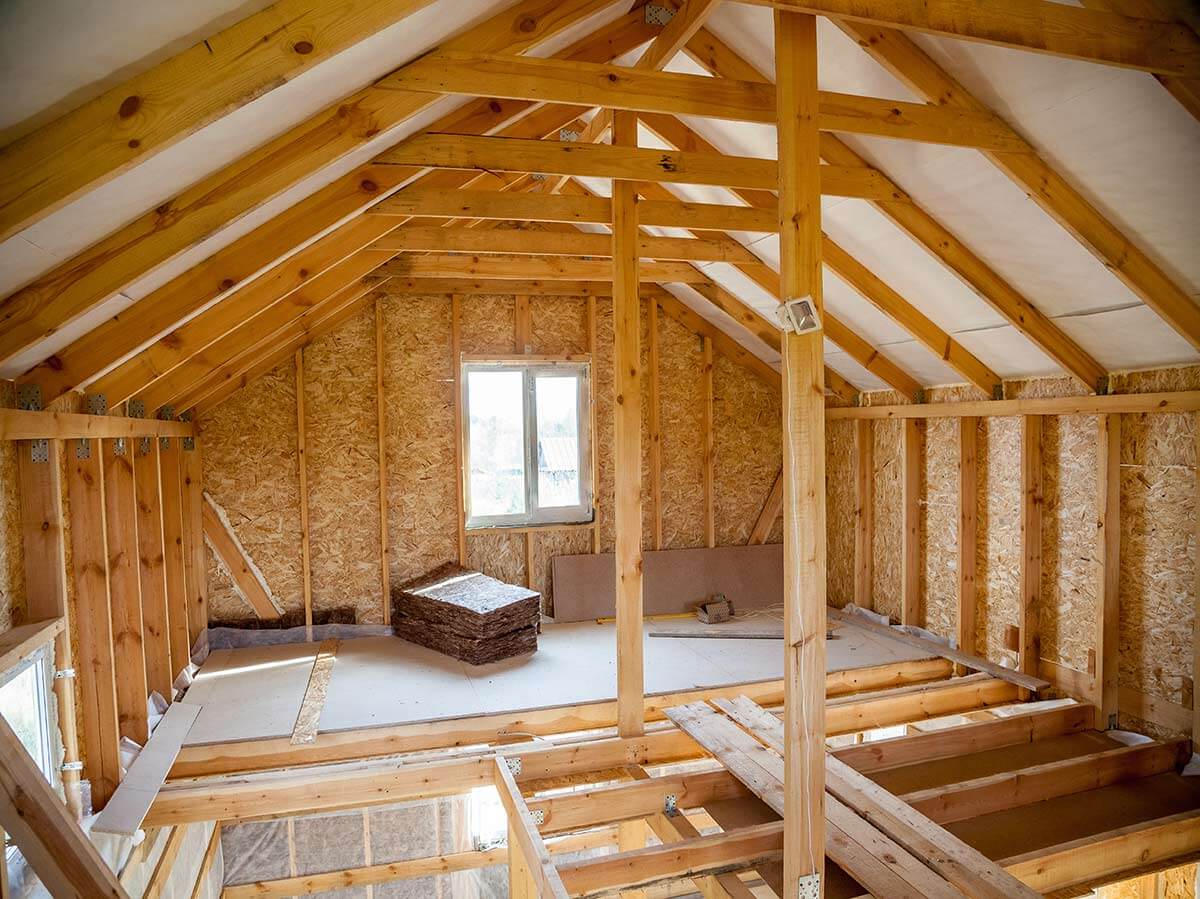 The Importance of Insulation in Roof Repair and Energy Efficiency
The Importance of Insulation in Roof Repair and Energy Efficiency Tranquility in the Treetops: Obed Wild and Scenic River
Tranquility in the Treetops: Obed Wild and Scenic River A Step Back in Time: Military Memorial Museum
A Step Back in Time: Military Memorial Museum
 Looking to give your home a facelift with a new roof?
Looking to give your home a facelift with a new roof? Metal Roofing
Metal Roofing Other Roofing Materials
Other Roofing Materials Roof Inspections: The Secret to a Happy Home (and Wallet)
Roof Inspections: The Secret to a Happy Home (and Wallet)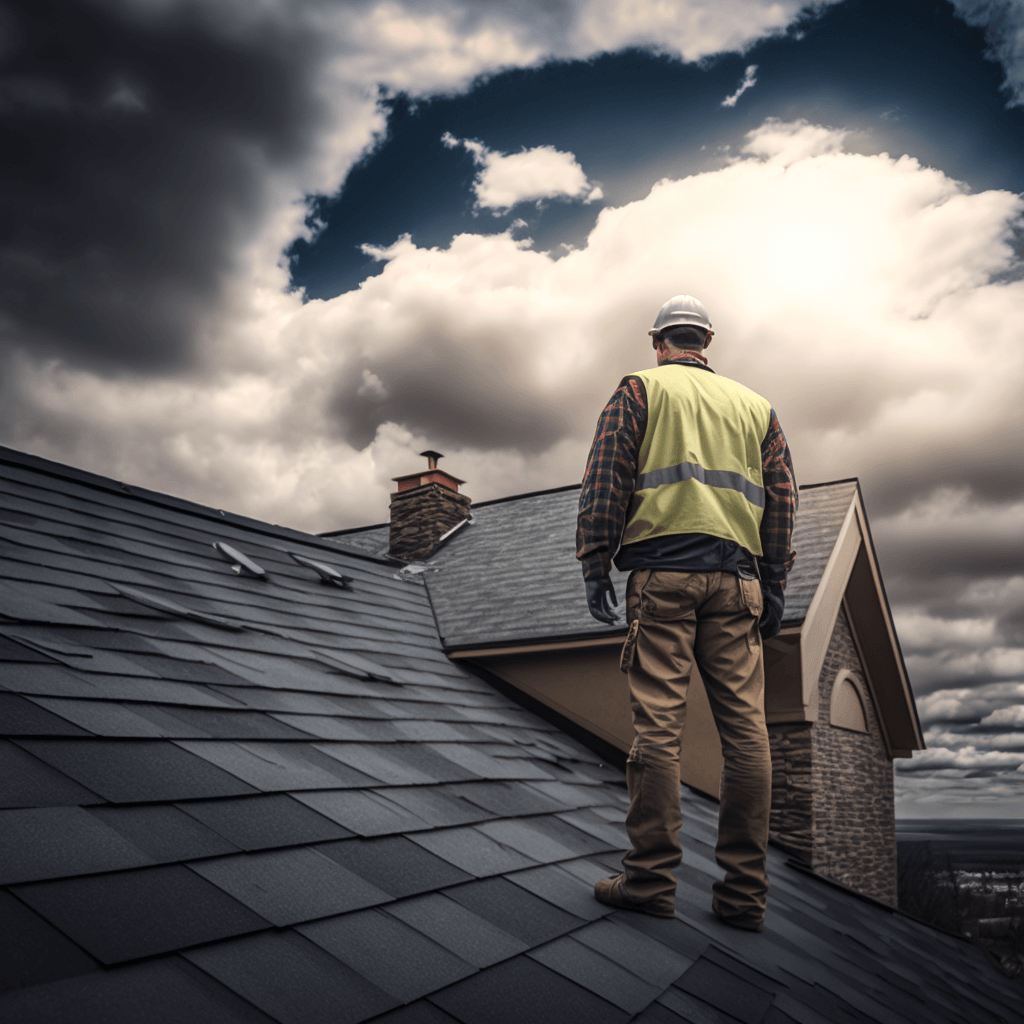 Identify Potential Safety Hazards
Identify Potential Safety Hazards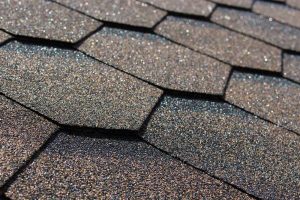 Asphalt Shingles
Asphalt Shingles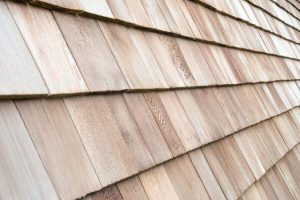 Wood Shingles
Wood Shingles Tile Shingles
Tile Shingles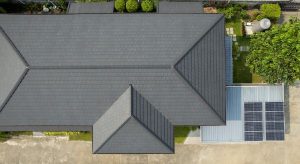 Slate Shingles
Slate Shingles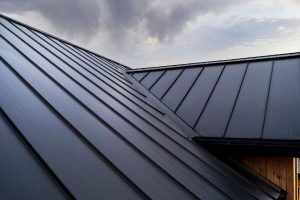 Metal Shingles
Metal Shingles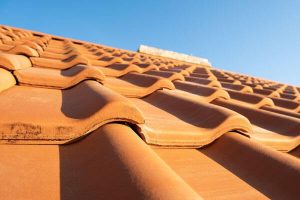 Terracotta and clay are great material choices for hot weather. They are heat-resistant and extremely durable. Not only are they strong and dependable, but they can be very aesthetically pleasing, adding a nice zest to the outside appearance of your home.
Terracotta and clay are great material choices for hot weather. They are heat-resistant and extremely durable. Not only are they strong and dependable, but they can be very aesthetically pleasing, adding a nice zest to the outside appearance of your home.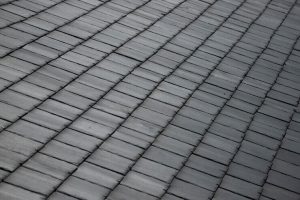 Another great material for your shingles is slate tiles. This is a natural material that is often requested by homeowners who value the vintage look. The lighter-colored slate tiles help to reflect the heat, while darker-colored tiles absorb it, Make sure that you have a balanced amount of each. Keep in mind that the prices for slate tiles might be more than other options.
Another great material for your shingles is slate tiles. This is a natural material that is often requested by homeowners who value the vintage look. The lighter-colored slate tiles help to reflect the heat, while darker-colored tiles absorb it, Make sure that you have a balanced amount of each. Keep in mind that the prices for slate tiles might be more than other options.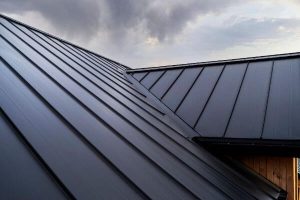 Metal sheets, contrary to popular belief, are great options for roofing material in hotter climates. They are extremely durable. If you choose a lighter color of metal, the shingles will efficiently resist heat without letting the sun’s rays in. They are also a great option for budget-savvy homeowners; they will quickly pay for themselves in their performance.
Metal sheets, contrary to popular belief, are great options for roofing material in hotter climates. They are extremely durable. If you choose a lighter color of metal, the shingles will efficiently resist heat without letting the sun’s rays in. They are also a great option for budget-savvy homeowners; they will quickly pay for themselves in their performance.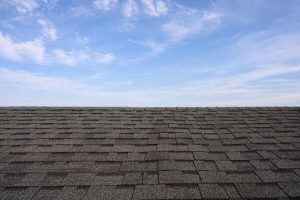 Asphalt is a common roofing material seen in colder climate areas because it maintains its structural integrity so well against the colder elements. If your roof does incur damage, it is very easy for a professional to replace the damaged shingles. If you decide to go with an asphalt material, make sure you talk to us about impact-resistant shingles, so you can really get more bang for your buck.
Asphalt is a common roofing material seen in colder climate areas because it maintains its structural integrity so well against the colder elements. If your roof does incur damage, it is very easy for a professional to replace the damaged shingles. If you decide to go with an asphalt material, make sure you talk to us about impact-resistant shingles, so you can really get more bang for your buck.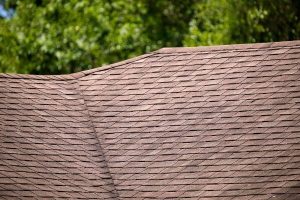 Composite shingles are a lightweight alternative to a slate and cedar shake that is becoming quite popular. So long as you have a great foundation on your house, this type of material will offer more than enough reinforcement to your roof. It will keep you and your family safe and warm in the colder climates.
Composite shingles are a lightweight alternative to a slate and cedar shake that is becoming quite popular. So long as you have a great foundation on your house, this type of material will offer more than enough reinforcement to your roof. It will keep you and your family safe and warm in the colder climates.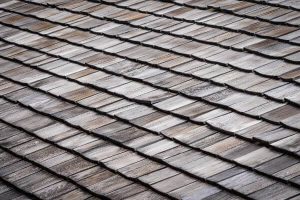 We didn’t forget about wood shingles. This type of shingle is often used in cold climates because it can provide twice the amount of insulation that an asphalt roof does. Wood shingle material will last about 25 years, so you won’t have to worry about replacing it for quite some time.
We didn’t forget about wood shingles. This type of shingle is often used in cold climates because it can provide twice the amount of insulation that an asphalt roof does. Wood shingle material will last about 25 years, so you won’t have to worry about replacing it for quite some time.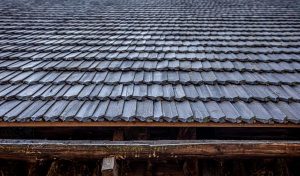 Wood shake roofs are also a great material to use in cold climates. Because wood shakes are even thicker than wood, they will be able to resist stronger winds, rain, and hailstones better than other roof materials. Wood shake roofs last up to about 35 to 40 years if maintained properly.
Wood shake roofs are also a great material to use in cold climates. Because wood shakes are even thicker than wood, they will be able to resist stronger winds, rain, and hailstones better than other roof materials. Wood shake roofs last up to about 35 to 40 years if maintained properly.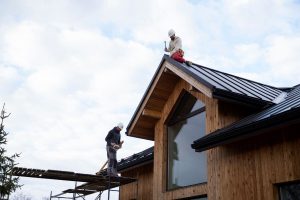 Signs that you might have found a Bad Roofer
Signs that you might have found a Bad Roofer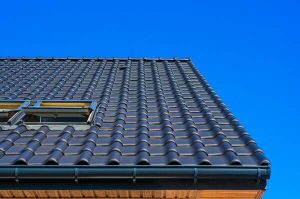 What Are Solar Roof Tiles?
What Are Solar Roof Tiles?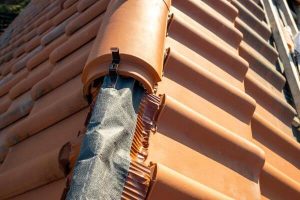 Leaks
Leaks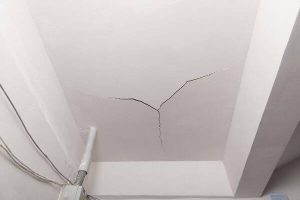 Blistering
Blistering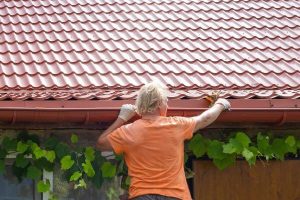 Gutters
Gutters Birds
Birds Raccoons
Raccoons Wasps
Wasps